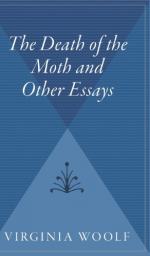|
This section contains 442 words (approx. 2 pages at 400 words per page) |

|
Craftmanship Summary & Study Guide Description
Craftmanship Summary & Study Guide includes comprehensive information and analysis to help you understand the book. This study guide contains the following sections:
This detailed literature summary also contains Topics for Discussion on Craftmanship by Virginia Woolf.
The following version of this essay was used to create this guide: Woolf, Virginia. "Craftsmanship." The Death of the Moth and Other Essays. Project Gutenberg Australia. http://gutenberg.net.au/ebooks12/1203811h.html#ch-25.
Note that all parenthetical citations refer to the paragraph number in which the quotation appears.
Woolf begins her essay by announcing its title, "Craftsmanship," and declaring that it is impossible to discuss words alongside the idea of craftsmanship. She glosses the term "craft" to have two important meanings: first, to make "useful objects out of solid matter," and second, the act of deceit (1). She announces that words do not subscribe to either of these definitions of craft. She explains that words are not useful because they are not straightforward or plain. Words instead, according to Woolf, invite a number of possible meanings and definitions that make our minds wander. She uses the example of the Michelin Guide and its symbols to show how people have navigated around using words in order to achieve utility.
Words also, Woolf asserts, tell the truth. She says that "the only test of truth is length of life," and points to the persistence of language as evidence that words are the "truest" (4). She asks her audience what the proper use of words is, and explains that words are different when they come "fresh from a human brain" (5). She notes that words have the power to transform a person into the text they produce.
Woolf goes on to say that one of the most intriguing characteristics of words is their ability to suggest or conjure. She points to examples of how certain words remind us of other words and how we are constantly and unconsciously making those connections. She poses another question to her audience: "How can we combine the old words in new orders so that they survive, so that they create beauty, so that they tell the truth?" (6). Woolf asserts that this task is more difficult than one would think, because it is impossible to teach words: "they are the wildest, freest, most irresponsible, most unteachable of all things" (8).
Continuing to discuss the nature of words, Woolf contends that there are prized works of English literature already in the dictionary, but that it is simply a matter of putting them in the right order to achieve greatness. She says it is useless to try to constrain words with logic and that only a few simple rules like grammar and spelling will suffice. She praises words' changeability, capaciousness, and sense of democracy; she ends the essay by arguing that creativity in words comes when one "pauses" and goes quiet in darkness (10).
Read more from the Study Guide
|
This section contains 442 words (approx. 2 pages at 400 words per page) |

|



